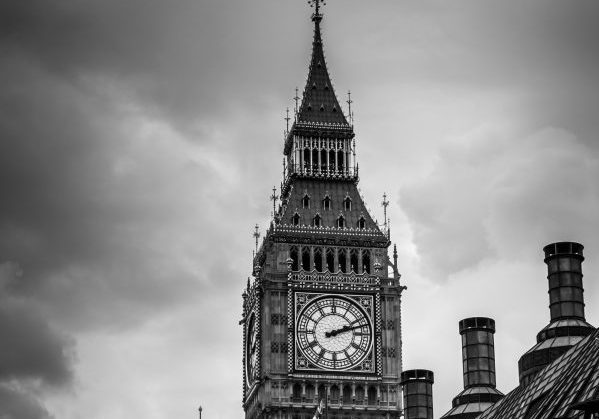There is no such thing as an Independent Central Bank. They are all the creatures of the states that own them. To those who thought otherwise the virus is changing the reality and rhetoric. Central Banks and treasuries are working together to try to offset the damage lock down and closures are doing to economies.
In some parts of the world this is nothing new or unusual. The People’s Bank of China proudly proclaims that it follows policies to promote the wider economic goals of President Xi. They set out how they work in harmony with the government, and how monetary and fiscal policy combine to deliver the aims of the state. In the USA the Fed has twin objectives for inflation and growth, and understands it needs to work with the Executive government and set its monetary policy into the general economic policy framework.
Any dictator ensures the central bank bends to his will and may appoint a friend or family member to ensure it does. In some of the democracies there has been a myth in recent decades that their central banks are independent. This is allied to the view that a small team of dedicated officials are better equipped to make crucial decisions about interest rates, money and credit than elected politicians. This can elide into a view that they are going to get these judgements right. As a result the officials are in various ways placed outside the normal political exchanges that characterise a lively democracy. Whilst Oppositions can debate the conduct of economic policy, the position on tax and spend and all the things the government does, there are attempts to put banking, credit and interest rates off limit from full democratic scrutiny on the grounds these are “technical”. This view has been particularly prevelant in the EU, where the idea of so-called central bank independence was incorporated into the Treaties and was a requirement of the Euro scheme. It has worked out rather differently in practice.
It is true that a democratic government can create a so-called independent Bank for a period. The independence lasts for as long as the central bank pleases the government, for as long as no other overriding policy issue arises which takes priority, and for as long as the opposition parties go along with it. Maybe the closest we have seen to an independent central bank was the German Bundesbank in the post war period. It did a good job at allowing decent growth whilst keeping inflation low. It attracted cross party support, so it appeared that it was indeed independent. Two issues then came to the fore in the 1990s which revealed the underlying reality.
Even the Bundesbank was not independent when it mattered
The first was the merger of East and West Germany. The government wanted an early amalgamation of the West German DM with the Ostmark. The Central Bank warned of the dangers given the large divergencies in living standards, productivity levels and general performance, but they were overruled. They then argued for a lower valuation of the Ostmark to the DM for the takeover, but also lost that. As a result German economic policy was badly disrupted for a period, with mass migration of labour to the West, and a big build up of state debts to subsidise East Germany. East Germany could not compete successfully at the chosen exchange rate, so suffered high unemployment and needed cash transfers from the West. The Bank had offered good economic advice, but the political imperative was different.
Subsequently the German government decided it wanted to join the Euro. This meant the abolition of the domestic currency which had been developed and burnished so successfully by the Central Bank. Again there was no point in the Central Bank objecting. The German Central Bank was effectively abolished as a so-called independent body with its main powers transferred to the ECB without a fight.
How independent was the Bank of England?
In the UK so-called independence was claimed by the Labour government first elected in 1997 . The government changed the Bank’s Statutes and argued they had made the Bank independent. The reality was very different. Gordon Brown as Chancellor thought there was a Labour problem with the City. He feared there was always the danger that a Labour government would once again lose the confidence of markets. The 1945 and 1966 Labour governments had both been through the trauma of devaluations with required austerity policies to follow. The markets had forced a change of economic policy on the 1974-9 Labour government, including a trip to the IMF to borrow more with onerous policy conditions. Gordon Brown thought that the spin of a more independent Bank would reassure and make such economic disasters less likely. He invented a very lopsided and limited view of what an independent Bank might be like. The Bank of England was shorn of powers to manage and raise the state debt in the markets. It lost its powers to regulate commercial banks, crucial to the pursuit of a successful monetary policy. Arguably the loss of these considerable powers and the knowledge of markets they bestow was an important contributory factor in the poor decision taking during the banking crisis in 2007-9.
The Bank was given more control over setting interest rates, so it became a large organisation revolving around a Committee which mixed full time insiders and outside part time contributors which met monthly. Even this power was less than complete. There were probably plenty of contacts between the Treasury and the Bank behind the scenes so the Bank would be aware of the views of the government on monetary matters. On one occasion when the Chancellor probably feared a rise in rates he did not want, he decided to change the remit of the Monetary Policy Committee. He shifted the inflation target from the more buoyant RPI to the more restrained CPI so there was less excuse to hike rates.
When the banking crisis was at its height with money too tight and commercial banks in great distress, the leading Finance Ministers of the world including the UK Chancellor of the Exchequer agreed a concerted move to stabilise markets by all cutting interest rates together. In order to preserve the fiction of independence the UK Monetary Policy Committee hastily put together a meeting out of its usual cycle to agree spontaneously and” independently” to cut the rates in the way Finance Ministers wanted. The Finance Ministers were on that occasion right, and they effectively overruled so-called independent Banks as they had to do.
Today we see welcome collaboration and joint working between governments and central banks


























